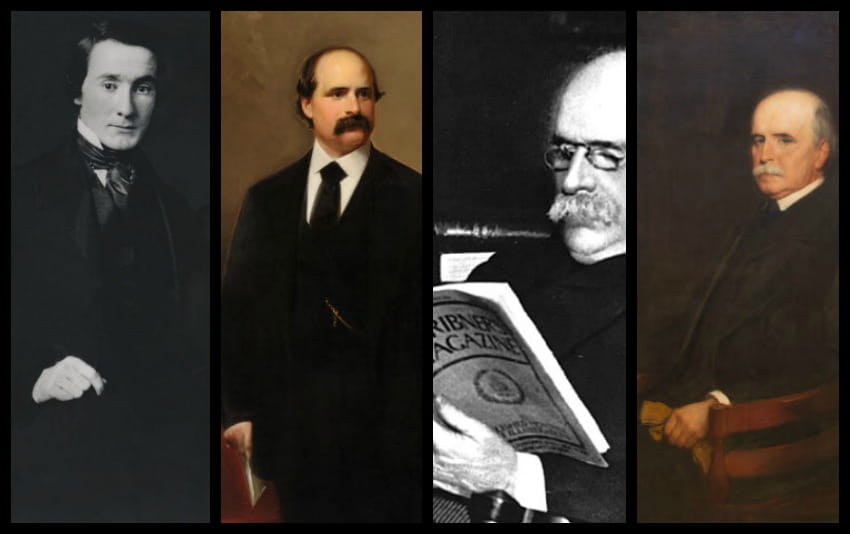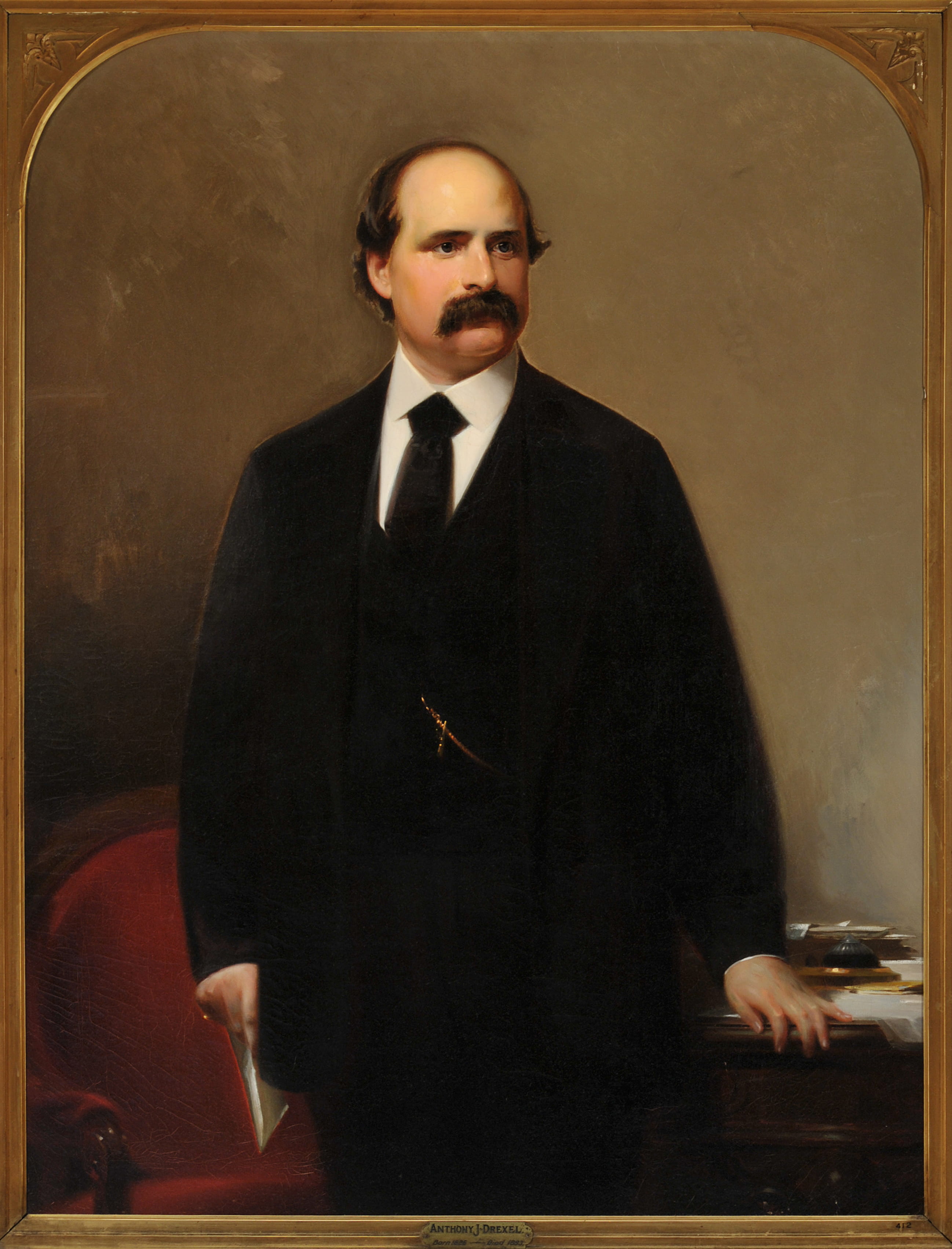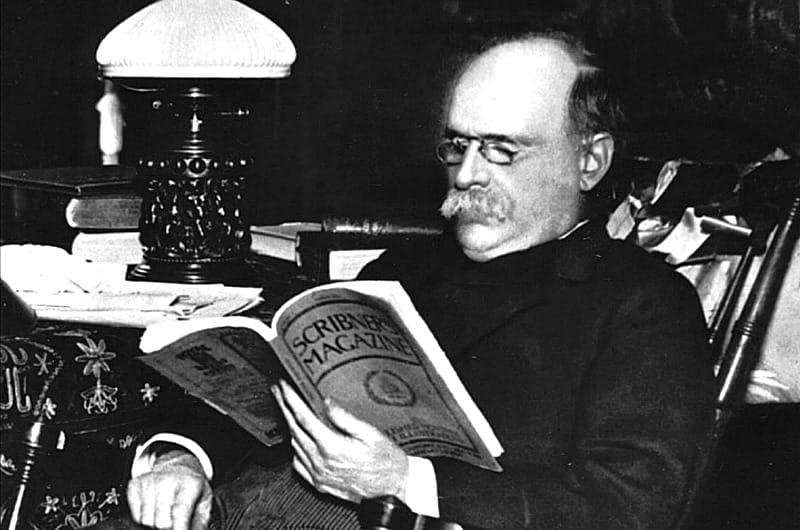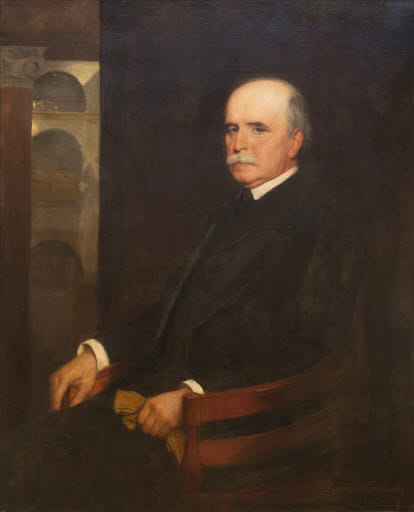Who Was A.J. Drexel?

This article is part of the DrexelNow "Faces of Drexel" series honoring Drexel's history as part of the Universitywide celebration of the 125th anniversary of Drexel's founding in 1891.
Drexel University founder, financier and philanthropist Anthony “Tony” J. Drexel would probably never have approved this DrexelNow article. Just as he might have done in his day, Tony has given very few quotes and left very large holes in his biography to write about him.
It’s ironic considering that Tony was one of the biggest and most press-shy celebrities of his day. He was a multimillionaire (a billionaire in today’s currency) but dressed humbly, had an incredible work ethic, lived in the same city his whole life and spoke with anyone who wanted to talk to him (minus reporters, of course). He was the kind of man — the only man, really — to make anonymous donations of thousands of dollars, destroy his papers and letters, decline public offices, refuse to give interviews to newspapers and rarely pose for pictures and paintings.

That portrait of him in the Paul Peck Center, displayed above on the right? He was badgered into the sitting by his best friend of 40 years, George W. Childs, and only allowed it to be hung after his death. Most of the other art in his likeness was made after his death, such as the statue outside Gerri C. LeBow Hall and the marble bust in Main Building. Compared to friends Ulysses S. Grant and J.P. Morgan, Drexel has been forgotten by time and biographers. Even now, when you Google any iteration of his name, only a few of the top hits actually relate to him.
It must be said that Tony has a biography — written after his biographer read a sentence about Tony in a book about J.P. Morgan and learned that the great tycoon yielded only to Tony. “Who on earth was Anthony Drexel that he could command such esteem from the world’s most powerful man?” wondered future biographer, Dan Rottenberg.

Who was Tony Drexel? Through his biography, which names him “The Man Who Made Wall Street,” we learn that Tony was born 190 years ago on September 13, 1826. He was the third child (out of 6) for struggling Austrian artist Francis Martin Drexel and Philadelphia native Catherine Hookey. At age 7, he was enrolled in a coed French and English boarding and day school (his father reportedly painted portraits of the headmistress’ three daughters as payment). As a result, Anthony gained a head for business, a heart for supporting the arts and the less fortunate and a tongue for English, French and German fluently and limited Spanish and Italian.
At age 13, Tony was pulled out of school to work fulltime at his father’s fledging banking firm. He and his older brother Francis Anthony were boys who did the work of men who certainly weren’t treated as the owner’s sons: they came early and stayed late and were known to eat cold dinner at the counter and sleep under it as night watchmen. He was just 21 when he became partner and later assumed control of the company when his father and elder brother were still alive.
In 1850, Tony married Ellen Rosét, the daughter of merchant John Rosét and a woman he had known since childhood. They would remain married until her death 41 years later and they would have nine children together. They spent most of their marriage in a three-story, 41-room Italian-style villa in relatively rural West Philadelphia and would build five mansions for their children nearby.

When his father died in 1863, 37-year-old Tony was head of one of the world’s largest and most influential banks. He was involved with financing revolutionary American institutions like the Edison Electric Light Company, the Panama Canal and major railroad companies at the time, as well as every war America ever fought in his lifetime.
But after all of that, little is known of his family life, his childhood, his mother and father, his likes and dislikes. Similarly, nothing is really known about what Tony felt about his life, his work, the arts, literature, politics and current events.
Here’s a man whose name, the same one that adorns this school, was once hailed in the business world. Here’s a man whose figure was a familiar sight in Philadelphia, where he could be seen working to and from his ornate home at 39th and Chestnut streets and his humble office on 3rd Street every day like clockwork. But few people knew who he really was and what he really thought — and they followed his wishes of privacy after his death and their own.

There is just one recorded instance, per his biography, of a time in which Tony spoke in public and allowed himself to be celebrated (and documented). It was in early 1891, a few months before Tony would refuse to show up at the opening of his own school, and he was at a dinner given by Philadelphia’s mayor. At the end of the meal, a toast was proposed in his honor.
Tony stood up. He said just three sentences: “I make no pretensions to oratory. On the contrary, I much prefer to be quiet. All that I wish to say is that whenever anything is wanted, call on me.” And then he sat down immediately afterward.
That was all he had to say for himself — and it was perfect.
In This Article
Drexel News is produced by
University Marketing and Communications.

